“Transforming cities from concrete jungles into jungle gyms, the Come Out & Play Festival reclaims space through free, public street games. Annual weekend-long events in New York and San Francisco provide forums for new types of play and unusual interaction with fellow urbanites. As game designer and festival co-founder Greg Trefry lamented the “loss of a sense that we can play in public space,” he said the festival can also open up places that might otherwise feel regulated. Games range from dodgeball and large-scale Battleship to “psychogeographic experiments,” and largely attract an under-40, media-savvy crowd. In future, Trefry hopes to host games that encourage more spontaneous drop-in participation, and as always, he wants to bring playfulness back to the public realm.”
See more community intervention projects here From Design Actions for the Common Good
Category: Uncategorised
-
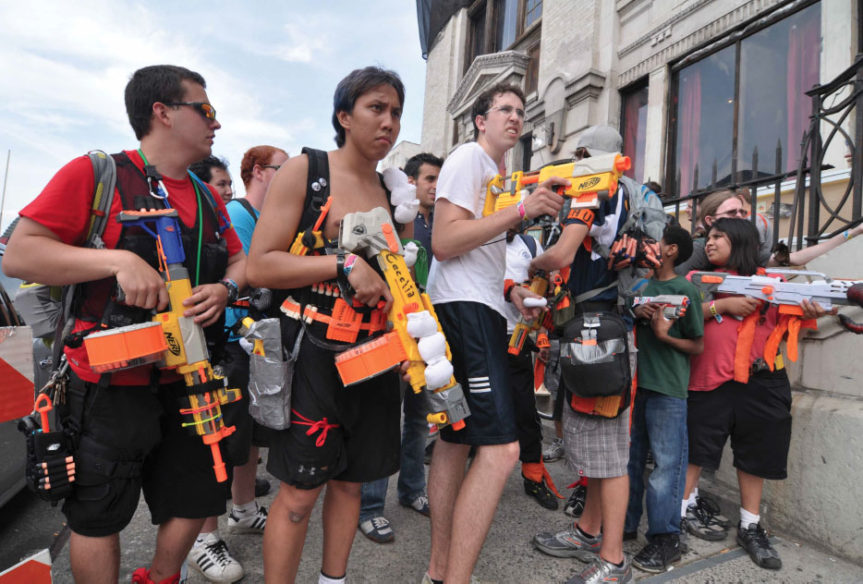
Come Out and Play Festival
-
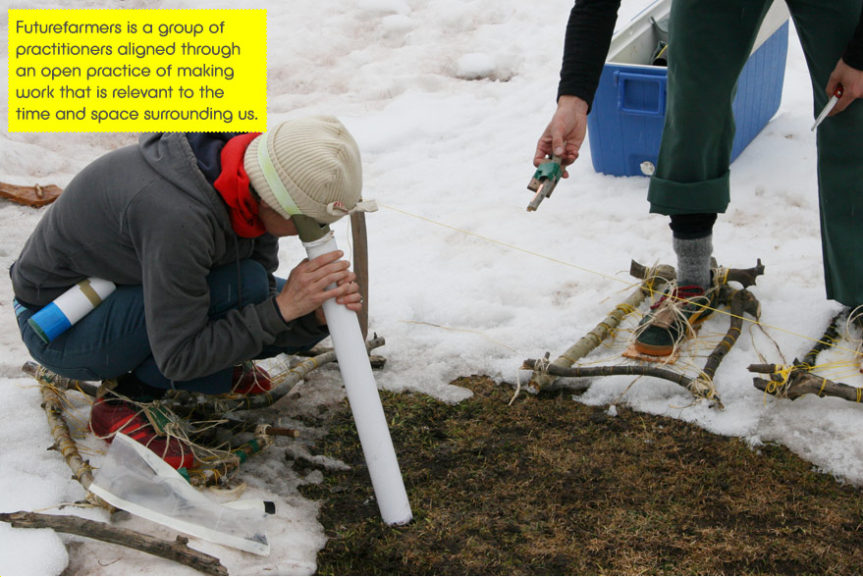
Future Farmers
“Futurefarmers is a group of artists and designers working together since 1995. We are artists, researchers, designers, farmers, scientists, engineers, illustrators, people who know how to sew, cooks and bus drivers with a common interest in creating work that challenges current social, political and economic systems. Our design studio serves as a platform to support art projects, an artist in residency program and our research interests.
Futurefarmers works across many media. This studio has evolved as a means to support Futurefarmers art practice and fellow protagonists in the road to positive change. We enjoy creating platforms for collective learning and engagement. We are a dynamic group of practitioners who provide services for cultural institutions, activist groups and organizations rooted in the transformative power of knowledge sharing and transmission. Our collective body forms a diverse knowledge and skill base that includes graphic design, architecture, urbanism, philosophy, ecology, industrial design, computer programming, information visualization, food practices, research, educational programing. We are aligned by shared interest and dreams.”See works at Futurefarmers
-
Indianapolis Island – Andrea Zittel
Artists and other researchers take up residency in a floating sculpture.
-
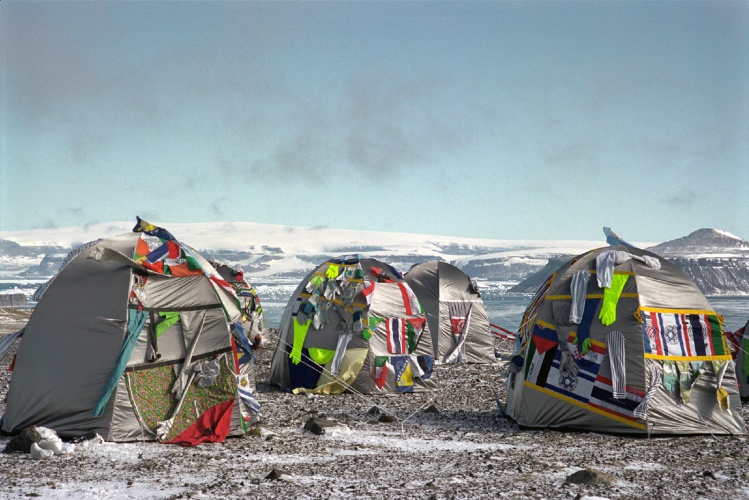
Lucy and Jorge Orta: Arctic Village and Other Projects
(From Studio Orta) “The Antarctic Village is an ephemeral encampment that references the plight of those struggling to transverse borders and to gain the freedom of movement necessary to escape conflict or natural disasters. The village is composed of Dome Dwellings, hand-made tents assembled with sections of flags from countries around the world, along with extensions of clothes and gloves symbolising the multiplicity and diversity of people. The flags and fragments of clothes are silkscreen printed with motifs referencing the UN Declaration for Human Rights and an article the artists propose to amend: Art. 13.3
Through the symbolic act of founding the Anatrctic Village, the artists reflect on the ideology that embodies Antarctica in particular the 1959 Antarctic Treaty. The Antarctic Treaty, which now counts 50 signatory nations, has preserved Antarctica as an area for scientific research with common pacific aims to protect the environment and to encourage international cooperation. Antarctica embodies utopia: a continent whose extreme climate imposes mutual aid and solidarity, freedom of research, of sharing, and collaboration for the good of the planet. It is a place where the immaculate whiteness contains all the wishes of humanity to spread a message of hope for future generations.”
For more projects see Studio Orta.
-
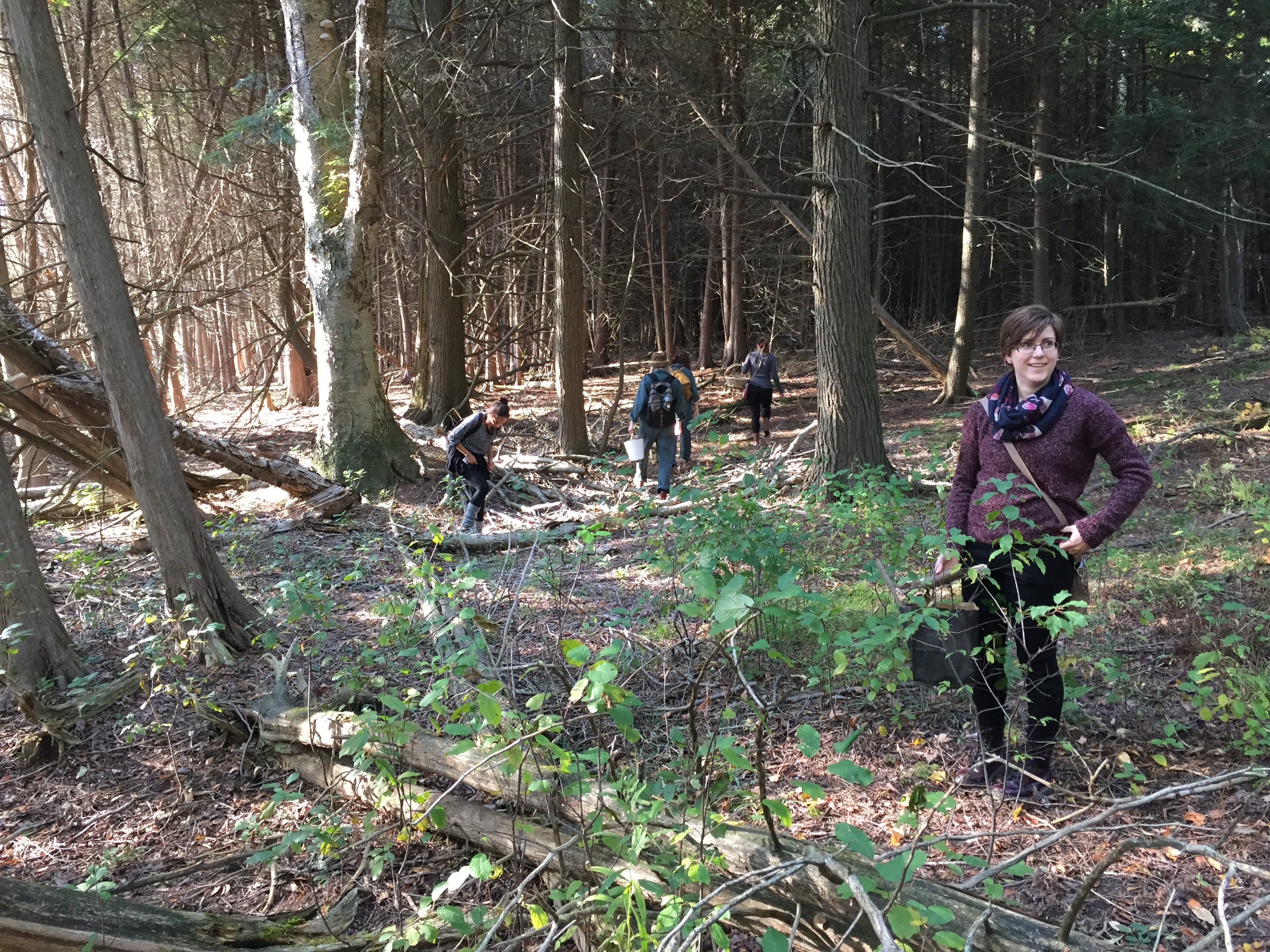
Arboretum Mushroom Foray
The annual Extended Practices Arboretum Mushroom Foray took place Oct. 7th this year, on an unseasonably warm afternoon.
Marije and Rachel with some delicate wing-like brackets, and Nora with the cutest button in the woods.
Alaina’s basket of several different macro-fungi including this jelly – commonly called “witch’s butter”.
A selection of field guides from the library-trunk.
Main identification features for stalked, gilled mushrooms.
Chris Earley from the Arboretum participating in the ID session on the hood of the car. Art Historian and mushroom enthusiast Dario Ré describing morphological features.
Dario, Rachel, Sonali and Marije check out gills and spore colour. I carry deadly poisonous Gallerina autumnalis back into the woods.
Edward, Sydney and an immaculate Clitocybe, smelling of aniseed, aslo edible Hericium with “teeth”.

The day’s species included several jellies, brackets, Clitocybe, medicinal Ganoderma, Suillus, Russulas, pear-shaped puffballs, Hygrocybe, wolf’s milk and other slime moulds. Luckily no one brought back a stink-horn this time!
John Cage inspecting a giant parasol mushroom. Major modern composer, artist, poet and writer – Cage was deeply enthusiastic about fungi, and was the first president of the New York Mycological Society. He developed several works, pieces of music and writings related to foraging and mushrooms. Aspects of chance and indeterminacy, along with silence – were among his most important themes. See this charming video for Cage’s interpretations of a mushroom haiku.
Carsten Holler, Experience, 2011.
For more information on John Cage, fluxus, and the significant relationships between contemporary art and mushrooms – see Dario Ré’s Mushroom Resource – featuring countless examples of works featuring mushrooms and mycology organized by genus. In Carsten Holler’s work above are the hallucinogenic: Amanita muscaria. In Eastern Canada and Ontario we have only the yellow version (variation: formosa), with the same toxic properties as the iconic red Amanita’s found in the west coast.
-
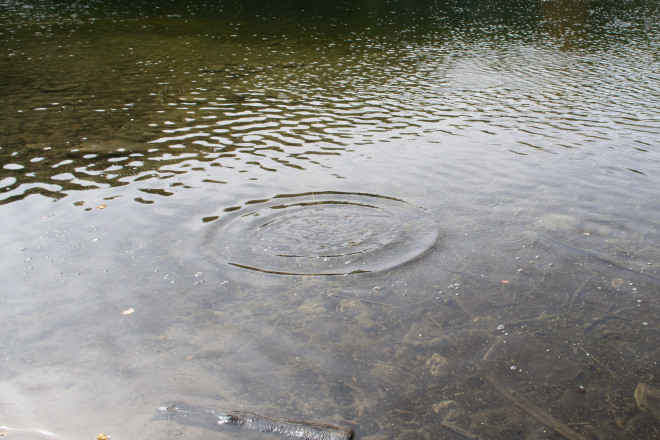
How To Skip A Stone

Last Friday, Outdoor School spent the day at Monocliffs where I properly demonstrated how to skip a stone.Stone skimming, ducks and drakes, or more commonly known as skipping stones is the act of throwing a stone across water in a way that it bounces off the surface multiple times. You want to choose a stone that is flat, skinny and about the size of your palm. The smoother and flatter the stone the better it will skip across water without breaking surface tension. I prefer rocks that are not perfectly smooth, so I’m able to grip it for a better spin.

Once you have your stone, you want to hold it between your index finger and thumb, placing the edge of the stone against your index finger. Place your thumb on one flat side of the stone and your middle finger on the other. Your thumb should be rested on top and the stone should fit in the crook of your index finger.Face the water sideways with your non-dominant side closest to the water. Squat down, so the rock is more parallel to the water when you toss it. You’ll want to slightly angle your rock upwards. The front side of the stone should be tilted at about 20°.


Skipping stones may seem simple, but it’s a beautiful pastime because it connects us to our natural surroundings and often with one another. I think there is something very special about the act of searching the earth for a stone.


It also creates the nicest sound.thank you Alison for documentation.
-
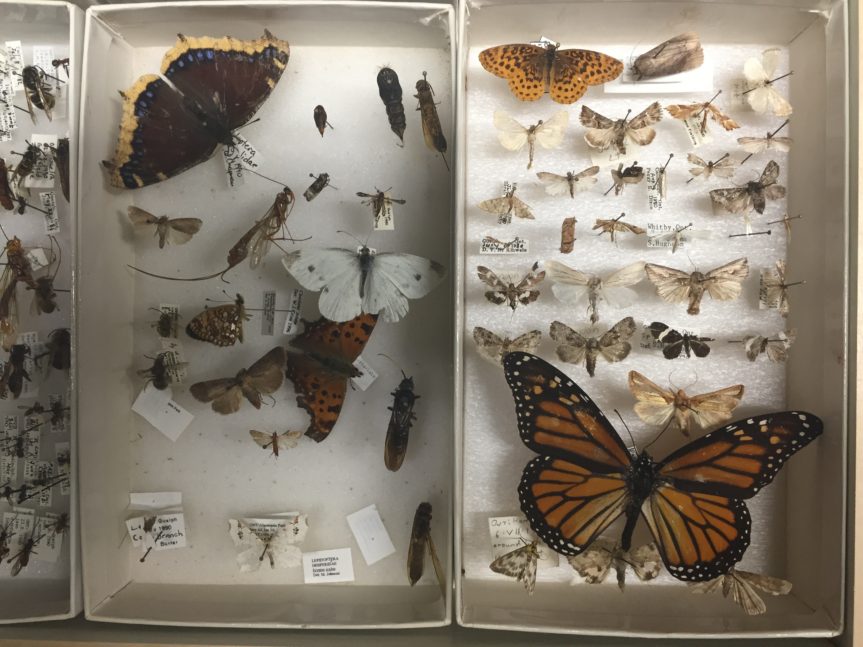
October 5th Visit to the Insect Collection
Today we visited the insect collection on campus in the Bovey building and were toured around by Morgan (thanks Morgan!). The University of Guelph Insect Collection was established in 1863 (that’s older than Canada as a country!) and contains specimens from that same year. Insects in the collection are from all over the world with an emphasis on insects from southern Ontario.
Below are some photos from our visit and some things we learned about:
We learned that to be classified an insect, a creature generally has to have six legs, an exoskeleton, and two pairs of wings.
While all bee species are in decline, the honeybee is the poster child for bee disappearance. In reality the honeybee is an invasive species in Canada, and while useful to humans (who doesn’t love honey?) isn’t the most concerning for entomologists. The Rusty Patched Bumble Bee is a native species that was found in abundance in Ontario, but hasn’t been seen here since 2009.
We learned about some different classifications of insects, for example that “bugs” have a sucking mouth part, like a bed bug would use to suck blood. Beetles are distinguished by their front set of wings being turned into an armoured shell. Flies are of the order Diptera, meaning “two wings”. They have two sets of wings, but only one set is functional for flying. Butterflies and moths have scaled wings, the coloured areas of their wings actually being scales. The last order of insect we talked about was that of wasps ants and bees (Hymenoptera).
Then we got to see some live bugs, a tailless whip scorpion and some Madagascar hissing cockroaches.
You can find out some more info on the insect collection’s website: http://www.uoguelph.ca/debu/

A Madagascar Hissing Cockroach (its hissing tactic worked, and scared us all!) 
A molted exoskeleton from the Tailless Whip Scorpion (with another, full scorpion in the back being friendly) 
Tailless Whip Scorpion meeting the class 
The two long antennae-like things on the top of this guy are actually a pair of legs! 
Camera set up for taking super-macro photos of specimens. 
Illustrated bug genitalia -
Wolfgang Laib
Wolfgang Laib was born in 1950 in Metzingen, Germany. Inspired by the teachings of the ancient Taoist philosopher Laozi, by the modern artist Brancusi, and the legacy of formative life experiences with his family in Germany and India, Laib creates sculptures that seem to connect that past and present, the ephemeral and the eternal. Working with perishable organic materials (pollen, milk, wood, and rice) as well as durable ones that include granite, marble, and brass, he grounds his work by his choice of forms—squares, ziggurats, and ships, among others. His painstaking collection of pollen from the wildflowers and bushes that grow in the fields near his home is integral to the process of creating work in which pollen is his medium. This he has done each year over the course of three decades. Laib’s attention to human scale, duration of time, and his choice of materials give his work the power to transport us to expected realms of memory, sensory pleasure, and contemplation.
http://www.art21.org/artists/wolfgang-laib?expand=1 -

PICTURES
Hello Outdoor School Students!
In light of our recent trip and the fact that the e-mail list on courselink doesn’t have everybody on it (since we’re separated into two sections), I decided to make a quick post about making your pictures bigger without making them all blurry. I know Diane said to stretch them, but that makes the quality horrible for some reason, even if your original picture was big and pretty before :O. So in case you didn’t know, there is an option to choose the size of your photo.
When adding media, it uploads it to a media library then you pick the photos you just uploaded, right? Well on the right side there are “attachment details” which may seem useless, I know, BUT, if you scroll down to the bottom of that little thing, you get options for the size! It usually picks thumbnail right off the bat for you, but if you just press Full Size, you should be able to get it as big as it will appear on the blog 🙂 Then you can just make it smaller if you like (or click the “small” or “medium” option)
Above is what you’re looking for, then just insert into post as usual 🙂 and it’s pretty!
Anyways, I will totally delete this post later, but I thought it might be helpful with all the beautiful photos that will be coming in from everyone on our trip! Okay, that is all 🙂
Peace out
– Andrea




















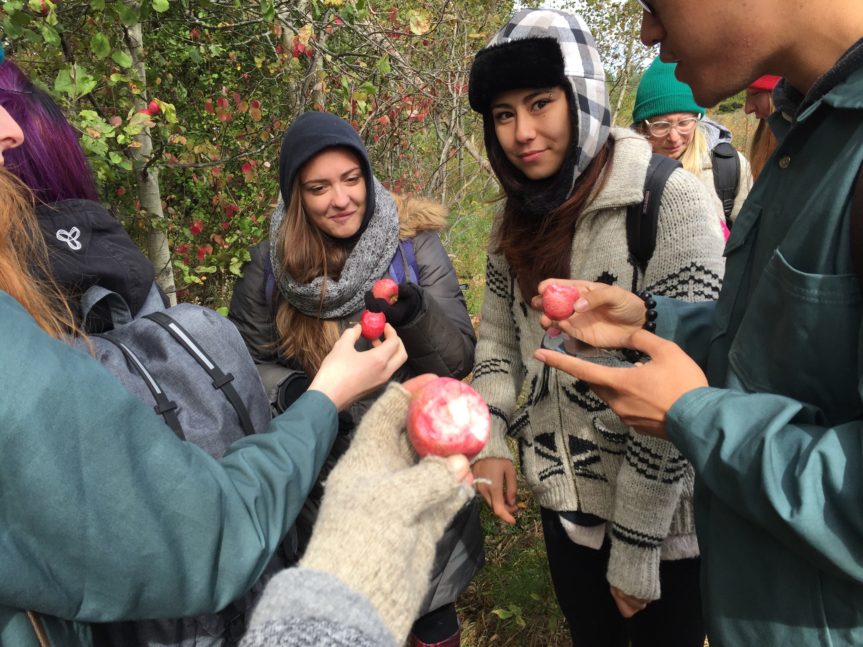











You must be logged in to post a comment.